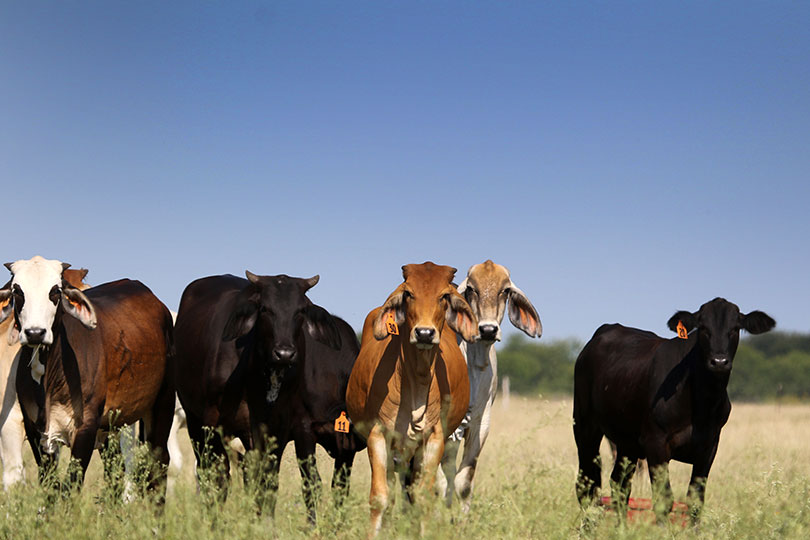By Julie Tomascik
Editor
Illegal immigrants could put livestock in Texas and the U.S. at risk for diseases. But that threat is currently low, according to Texas’ state veterinarian.
In September, more than 10,000 illegal immigrants overwhelmed officials and residents in Del Rio. That surge opened the border to a potential for disease exposure.
“We watched that situation carefully as it unfolded, and it has a potential to reoccur again,” Dr. Andy Schwartz, Texas Animal Health Commission (TAHC) state veterinarian and executive director, said. “It had some modest impacts on agriculture, but fortunately, we’ve not detected any major impacts.”
TAHC staff and the U.S. Department of Agriculture’s (USDA) Animal and Plant Health Inspection Service (APHIS) monitored the situation for introduction of diseases that could be harmful to livestock and animal agriculture.
“What caused the initial concern was that we knew there were a large number of people from Haiti, and recently, African swine fever was discovered there and in the Dominican Republic,” he said.
“Our concern was perhaps these individuals might be carrying some food with them, such as raw or undercooked meat or dried meat, that might contain the African swine fever virus.”
But as TAHC and APHIS learned more about the illegal immigrants, the agencies realized the travel timeline didn’t pose a significant threat.
Other diseases monitored by TAHC and APHIS include foot-and-mouth disease, tuberculosis, brucellosis and cattle fever ticks. These diseases could bring significant disruptions to the livestock industry in the state and across the nation.
“We have to be a little bit concerned about cattle fever ticks and that ticks can get on some bedding, on clothes and be transported across on or by the people. Fortunately, in this part of the state, due to the arid climate, there aren’t a lot of cattle fever ticks there,” Schwartz said. “With all the concerns with people in law enforcement there, it did disrupt some of the normal inspection processes that USDA does along that portion of the river with Mexico that goes from Del Rio down to Brownsville. That’s our permanent cattle fever tick quarantine zone. So, it did temporarily disrupt some inspection activity there, but that has gone back to normal now.”
Other disruptions affected transporting feeder cattle. About 1.2 million head of feeder cattle cross the border into the U.S. each year.
“That flow of cattle there was temporarily interrupted when the trucks couldn’t get across the bridge, and they had to divert to other ports to come into the country. But that was resolved when the bridge was opened up again,” he said.
USDA has a robust process in place for importation of livestock from Mexico that includes requirements for surveillance for tuberculosis in Mexico, and then testing of the individual animals that cross the border.
A good biosecurity plan can also help farmers and ranchers guard against diseases.
“That means to be careful where you buy from, make sure you’re not buying diseased animals. If at all possible, isolate them for a time after you get them to your facility, so that any incubating disease would have time to show itself before you commingle them with the remainder of the herd,” he said. “And then watch and guard against on-farm traffic. Individuals coming from other facilities can carry viruses and bacteria on their clothing, and that can also travel in trailers and crates and between facilities. So, we encourage producers to practice good biosecurity to protect themselves against a disease outbreak.”
The horse import process at the border also changed recently, Schwartz noted.
USDA is now holding horses at the border for seven days to get past an incubation period of a disease, Venezuelan equine encephalitis, that’s been discovered in Mexico.
“That’s something that horse owners are probably familiar with seeing it on the vaccine bottle and hearing about it, but it’s a viral disease that can be fatal in horses, and it has been discovered in Mexico,” he said. “So, as horses are being imported from Mexico, they’re held seven days at the border as a precaution. I’d mention that to anyone who’s importing horses to know it’s going to take a little bit longer, but to also reassure our horse-owning public that we are taking appropriate measures to prevent disease incursion.”
Farmers and ranchers are encouraged to notify their local veterinarian, TAHC and APHIS if they see signs of a potential disease outbreak or strange looking ticks.
TAHC operates a 24-hour hotline for reporting diseases. Farmers and ranchers can call 800-550-8242 to report any suspected foreign or emerging animal disease.
More information on animal health, diseases and biosecurity measures can be found on the TAHC website at tahc.texas.gov or USDA’s website at aphis.usda.gov.
For more stories on the border crisis, visit Texas Farm Bureau’s Border Crisis Impacts webpage.

